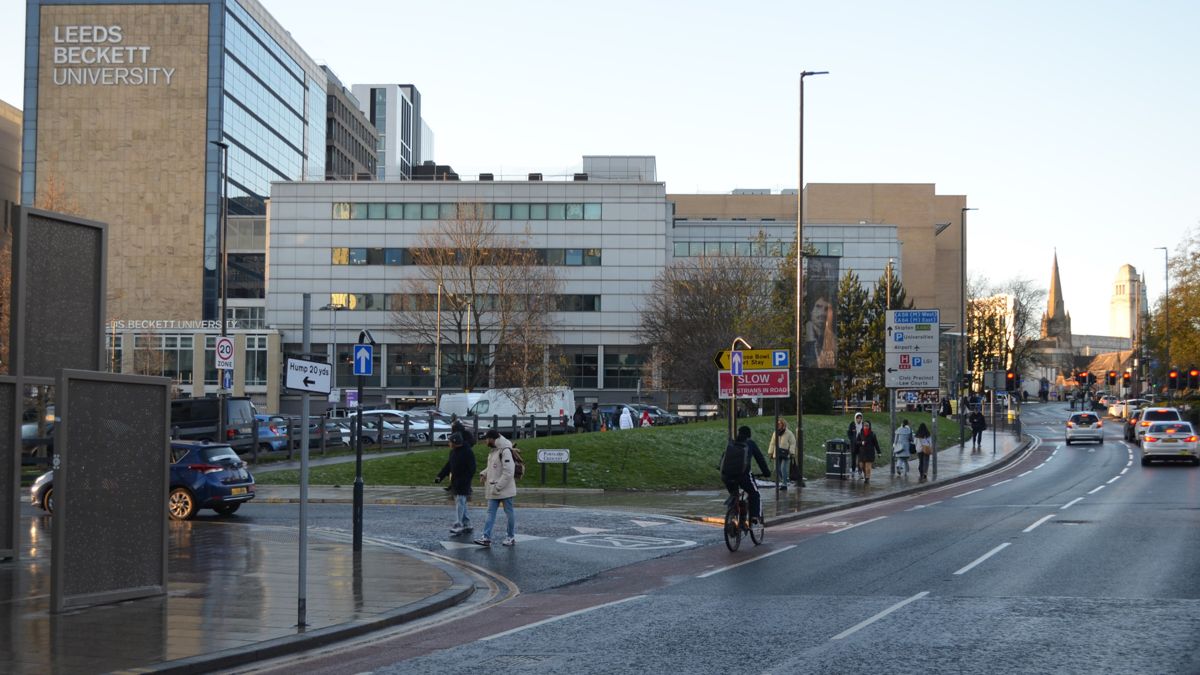The Woodhouse Lane Gateway Project consultation in Leeds is seeking public input to improve transport facilities along Woodhouse Lane, with a focus on safety, accessibility, and sustainability. The consultation aims to gather insights and suggestions from residents, businesses, and stakeholders to shape the project and create a safer and more efficient transport landscape for commuters, students, and local traffic.
What is the purpose of the Woodhouse Lane Gateway Project public consultation in Leeds?
The Woodhouse Lane Gateway Project consultation in Leeds seeks public input to improve transport facilities along Woodhouse Lane. It aims to enhance safety, accessibility, and sustainability for 2km from St Mark’s Road to the Headrow, focusing on human-centric design to support commuters, students, and local traffic.
Understanding the Woodhouse Lane Gateway Project
The area stretching from Leeds city centre to the neighbourhoods of Hyde Park and Woodhouse is at the cusp of significant changes. A pivotal consultation has been launched, inviting public participation to guide the enhancements of transport facilities along Woodhouse Lane. This initiative aims to address the 2km stretch of route from St Mark’s Road to the Headrow, which sees a blend of commuters, students, and local traffic daily.
Woodhouse Lane, along with Albion Street and the southern extent of the A660, forms the backbone of this corridor. The vicinity is not just a transit route but a vital hub for the city’s intellectual and recreational life, housing three major universities and leisure destinations such as The Light, Merrion Centre, and St John’s centre. Commuters from as far as Adel, Cookridge, and Bramhope frequently traverse this route, highlighting its regional importance.
Notwithstanding its significance, the route is not without its challenges. Congestion is a noteworthy concern, with its ripple effects causing delays, particularly for bus services. The area also has a troubling record of road safety incidents, with 98 reported casualties, including 23 serious collisions, since 2016. The consultation aims to gather insights on these issues and more, enabling a prioritization of solutions that enhance safety and accessibility for all modes of non-vehicular transport.
The Vision for Safer, Sustainable Transport
Leeds City Council, in their enduring commitment to sustainable development, has placed an emphasis on safety and efficiency in redesigning the Woodhouse Lane Gateway. Councillor Helen Hayden articulates this vision, stating, “The Woodhouse Lane Gateway is a busy route serving the city centre and neighbouring areas of Hyde Park and Woodhouse. We want to make it safer and easier to travel sustainably along the route.” She underscores the council’s resolve to eliminate road fatalities and serious injuries by 2040 through their Vision Zero strategy.
Taking a step further, the initiative also encompasses enhancing the overall experience of the route for pedestrians, cyclists, and those who wheel. It is an opportunity for the city to become a beacon of urban mobility that prioritizes human-centric design. This is a sentiment echoed by Tracy Brabin, Mayor of West Yorkshire, who urges the public to help shape the project by offering their insights and suggestions.
The partnership between Leeds City Council and the West Yorkshire Combined Authority serves as a testament to the collaborative approach being taken to achieve these goals. The extensive public engagement process will ensure that the developed plans reflect the needs and preferences of those who use the route most frequently.
Participate and Influence the Outcome
Public involvement is the cornerstone of the Woodhouse Lane Gateway scheme. Residents, businesses, educational institutions, and all stakeholders are invited to voice their concerns and contribute to the shaping of this project. With the consultation open until 11.59pm on Monday 19th February, there is a window of opportunity for individuals to make an impact.
Contributing is made accessible through various avenues. An online survey, estimated to take merely 10 minutes, can be found at woodhouselanegateway.commonplace.is. Furthermore, a drop-in event is scheduled for Wednesday 31 January, from 10 am to 4 pm at Leeds City Museum for those who prefer face-to-face engagement.
For individuals who are unable to access the internet or attend the event, options are still available. Paper surveys can be requested via email at connectingleeds@leeds.gov.uk or by calling 0113 336 8868. It is vital that the voices of all demographics are heard, ensuring the final proposal is representative and inclusive.
The consultation is not just a procedural step; it is a meaningful platform for the community to direct the future of their city’s transport landscape. Each opinion holds the potential to influence decisions that will shape the safety, efficiency, and sustainability of travel along Woodhouse Lane. Engage in the conversation, and be a part of Leeds’ journey towards a brighter transport future.
- The Woodhouse Lane Gateway Project consultation in Leeds is seeking public input to improve transport facilities along Woodhouse Lane, with a focus on safety, accessibility, and sustainability.
- The consultation aims to gather insights and suggestions from residents, businesses, and stakeholders to shape the project and create a safer and more efficient transport landscape for commuters, students, and local traffic.
- The area from Leeds city centre to Hyde Park and Woodhouse is at the cusp of significant changes, and the consultation aims to address the 2km stretch of route from St Mark’s Road to the Headrow.
- Congestion and road safety incidents are major concerns along Woodhouse Lane, with the consultation seeking insights on these issues and solutions that enhance safety and accessibility for all modes of non-vehicular transport.
- Leeds City Council has placed an emphasis on safety and efficiency in redesigning the Woodhouse Lane Gateway, with a vision of eliminating road fatalities and serious injuries by 2040 through their Vision Zero strategy.
